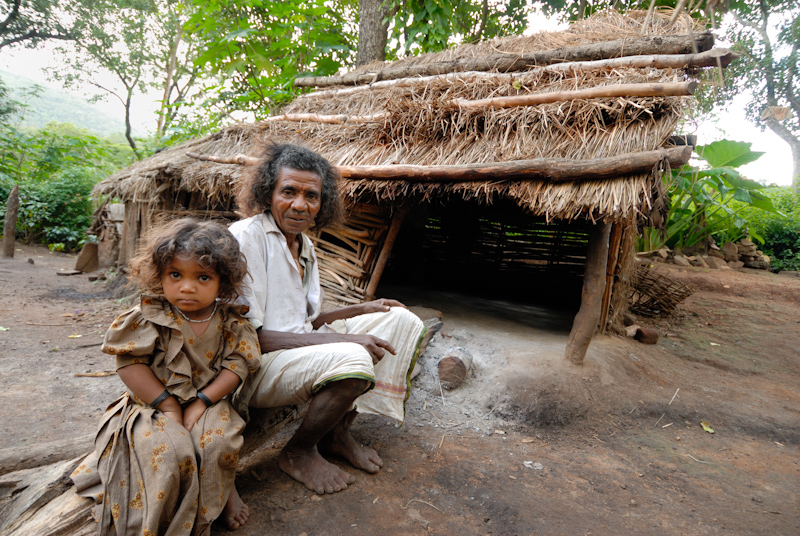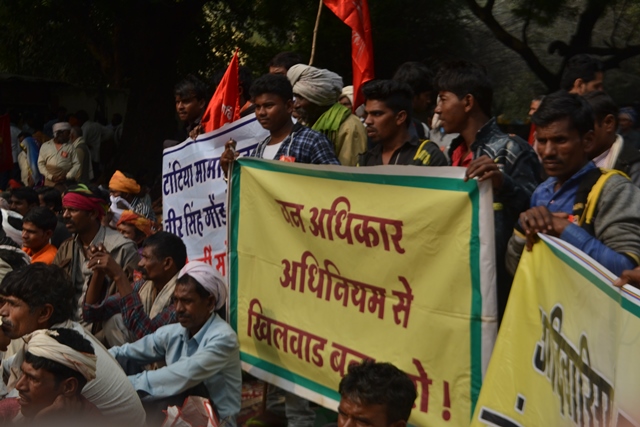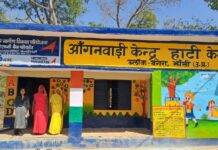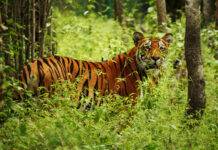
Hegemonic and authoritarian models of development are often against both communities and forests. Here is a look at the life and struggle of the Soliga Tribe in Karnataka that asserted its rights and won back its access to the forest as a source of life and livelihood.
Priyanka Yadav / The New Leam
[dropcap]W[/dropcap]e live in times where enhanced economic mobility peddled by the forces of neoliberalism and market forces has compelled almost every community to strive for a better lifestyle. The desire to constantly move up the economic ladder and secure all sorts of material comfort for one’s family has become the central quest of life for most people across the globe. The cut-throat competition, the race to the zenith of economic advancement and the perpetual eagerness to strive for more and more has made us restless and anxious of losing out. Amid the hustle bustle, an indigenous community chooses to lead life differently.
Soliga Tribe: Thriving on Knowledge of the Community

The Soliga Tribe or Children of the Bamboos as they are popularly known are occupants of the Billgiriranga hills of South Karnataka. They primarily survive on forest produce like honey, timber and berries. They worship nature and all that nature has given to them. Everything is revered religiously by this indigenous group. In fact this community believes in the traditional practices for preserving and nurturing the forest such as the practice of using fire in a moderate way to preserve bio-diversity.
The community believes that natural fires should not be extinguished and should be left to spread in order to get rid of biomes. They feel that extinguishing it would bring about more troubles like increased parasitic growth. This practice of the Soliga tribe was actually confirmed and accepted by modern research studies.
The Soliga tribe shares an intimate relationship with the forest; they possess knowledge and skills about the forest and forest conversation which is passed from one generation to another. Various research studies on forest, local culture, biodiversity, flora and fauna are conducted through the shared knowledge of the Soliga tribe.
The tribe divides the forest into three parts based on vegetation and gives those names in their local language- Kanu Kadu (evergreen), Male Kadu (deciduous), Bole (grasslands) and Nadu Kadu (shrub).
The Soligas are capable of identifying at least 100 varieties of plants on a square foot of land. They worship animals like bears, elephants, bison and wild boars and are also aware about their breeding and rearing practices. The tribe makes use of shifting cultivation on forest land.
The Logic of Displacement

The Soliga tribe was the major occupant of the Bilgiri Rangaswamy Forest Reserve (BRT) with a population of 16,487 people living in the hills from centuries, surviving on the collection of non-timber forest products.
In the name of protecting and conserving the forest, the BRT was converted into a wildlife sanctuary (BRTWS) in 1974 under the Wildlife Protection Act (1972) and by virtue of which the forest department banned shifting cultivation and displaced the Soligas to the periphery and only a few of the Soligas were allowed to stay inside the forest.
Further in 2004, the Supreme Court ordered a ban on the collection of non-timber forest products as well but the worst came when in 2011, BRT was declared as a tiger reserve because of which Soligas were displaced from their own land and livelihood.
Soligas used to practice shifting cultivation till a few years ago, as shifting cultivation has been banned now their traditional agricultural practices are endangered.
The declaration of the BRTWS in 1974 forced these people into a completely changed lifestyle and made them more vulnerable. Soligas survived through non-timber forest produce, settled agriculture, wage labour and some among them were employed in the government sector.
The government’s ban on non-timber forest produce collection in 2011 further intensified their vulnerability and the government did not provide any alternative employment. The Soliga families started to migrate to other places for employment. Many families migrated to find work, which had a serious impact on their social life and increased the chances of exploitation like their children’s education was largely affected due to migration but a few families left their children in their native places as it affected the children’s education and also the child-parent relationship.
Agency amidst Victimhood
In 2008, the Soliga tribe was surviving the atrocities leashed out due to the government order and so they decided to take their matter to court. There emerged an overwhelming response in favour of the community and nearly 1200 families were given back their land inside the forest reserve after a series of protests and demonstrations by the community in 2011.
The community knew their forest rights as inhabitants of the forest. Moreover their practices never harmed the forest, rather only helped in the growth and preservation of it and snatching away their land from them in the name of development was not a good move on part of the government.
Tribal population in India comprises 8.2 per cent of the total population of the country. Most of the tribes are inhabitants of the forest equipped with local knowledge of flora and fauna, they have since centuries learnt to coexist in the wild with the animals of the forest and neither of them is harmful for the other.
Governments exercise their power to displace these communities from the forest land in the name of development and preservation without even giving them any alternative shelter or employment which makes them highly susceptible and vulnerable to outside environment which has only led to exploitation of the tribal communities.
Skilled in the local culture and dialect, people from these communities take time to adjust in new environments and sometimes they are not able to adapt to the new lifestyle, which leads to an onslaught on the social, physical, emotional and economic environment of the tribes. Why is it necessary for the people of any community or the occupants of a particular land who are surviving on local food and agriculture, have adapted to and used local resources for furthering economic practices for a sustainable living, to migrate?
In the name of development and modernisation they are forced to leave their home and livelihood but it needs to be asserted that this notion of development is not inclusive.
Development and displacement bring a huge amount of loss for the local people be it economic, cultural or social along with a forced denial of indigenous ways of living and livelihood.
In this context getting back the right to the forest for the Soliga community is a huge win as it has preserved their culture and history. The Soliga community’s victory against the hegemonic order of the state raises hopes for all those who strive for a development narrative that is more inclusive and not exclusionary.













